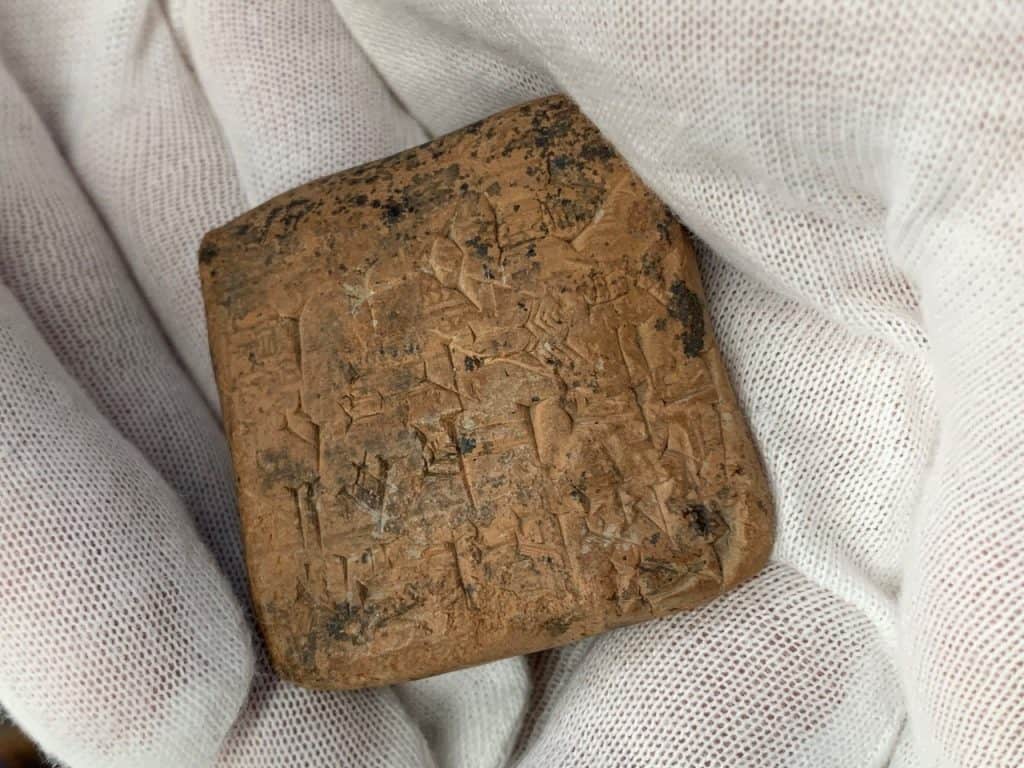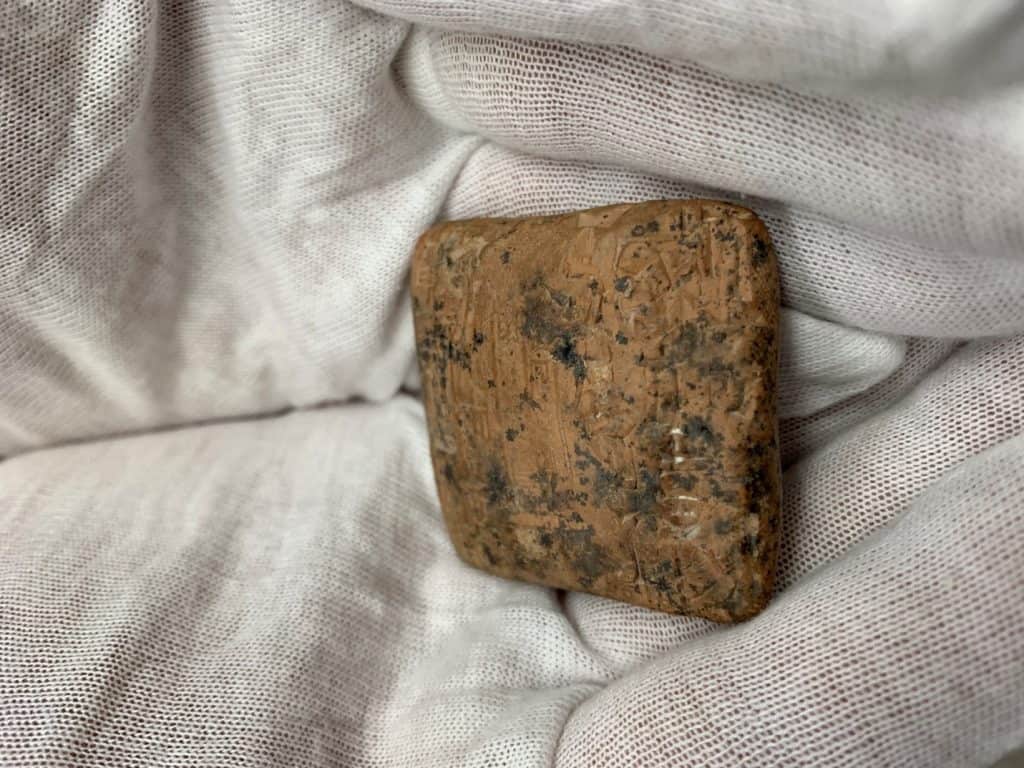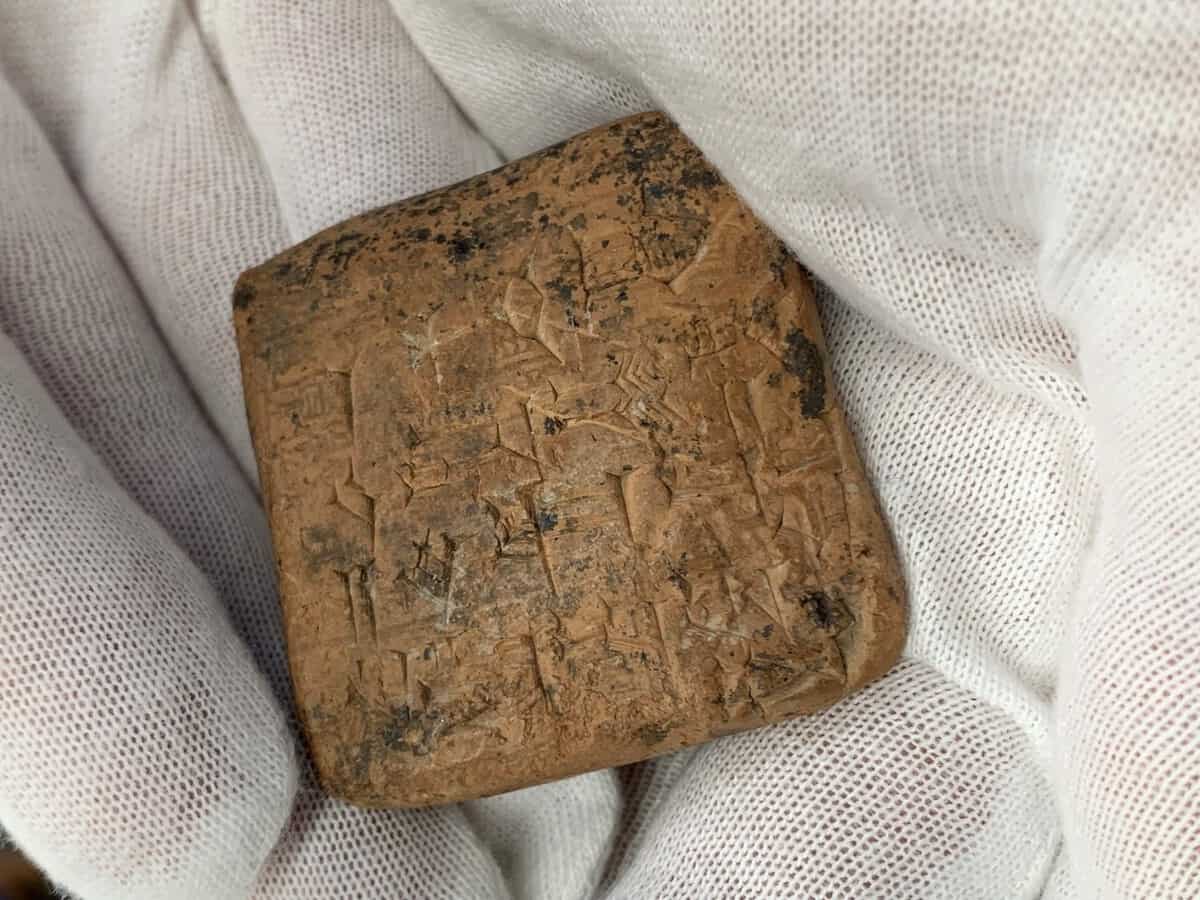The following is a post written by graduate student Kristi Hager, who recently finished her certificate for Book Studies at Center for the Book. As a student in Dr. Jennifer Burke Pierce’s History of Readers and Reading course through the School of Library and Information Science, Hager was given the opportunity to explore and learn more about an unexpected item found in the archives.
Imagine how many pieces of paper are used each year to record population changes, business transactions, or taxes. Even in an era of digital processes and storage, many companies and individuals still rely on paper as a secure version of a document and will print hundreds of pages of records. Finding secure ways to document business is not a new process. Thousands of years ago, administrative documents were being recorded, and some still are readable today.
On recent visits to the University of Iowa Libraries’ Special Collections, I was drawn repeatedly to a small display box covered with grey buckram holding a single object, an object that seems so out of place among the other books and papers displayed. In an archive full of unique items, it can be tough to stand out, but this clay tablet does.


Labeled simply as “Clay tablet dated to ca. 2050 b.c., from Umma, modern Djoka,” (call number xPJ4054.U55) this lump of dried clay is the oldest item in the archive. The tablet is small and almost square, only about 1.5 inches per side and no thicker than a slice of bread. There are black markings now on the tablet, almost reminiscent of small black ink droplets. It is hard to say where these marks came from or what they are. Even the content is unusual: written in Sumerian cuneiform, the tablet is actually a receipt.
For a sacrificial offering. Of a goat.
Proof that even 4,000 years ago in the Third Dynasty of Ur in Mesopotamia, in what is today part of Iraq, administrative and bureaucratic paperwork were a common enough occurrence that documentation was necessary.
In the center of the back of the tablet, there is the seal of the scribe who recorded this transaction. He identifies himself as Akala, a son of the “chief cattle manager.” The seal is a bit difficult to see, as it isn’t as deeply inscribed as the text of the receipt.
This seal and the date next to it are also proof of the importance of administrative documentation. The name of the scribe and the year the offering was given are evidence of a population large enough that members of the priesthood who received the sacrificial goat may not have known those giving the offering on sight.
This receipt is one of thousands that still exist. According to the Cuneiform Digital Library Initiative, there are nearly 103,000 administrative texts from the same period as this one in museums and archives around the world. The Cuneiform Digital Library Initiative (CDLI) is a joint project of the University of California, Los Angeles; the University of Oxford; and the Max Planck Institute for the History of Science that sought out cuneiform manuscripts in institutions and compiled the archival information. Materials from places such as the Louvre in Paris; the Hermitage Museum in St. Petersburg, Russia; the Iraq Museum in Baghdad; the Israel Museum in Jerusalem; the New York Public Library; National Museums of Scotland in Edinburgh; and the Semitic Museum at Harvard reveal a wide range of documents. Photographs, translations, location information, age, and purpose of the document have allowed scholars access to manuscripts that may have been difficult to access due to travel and budget concerns.
And right alongside the documents from these prestigious museums is xPJ4054.U55, the clay tablet in Special Collections here at Iowa. Being able to view a document with this sort of history up close is an opportunity a casual or budding scholar may not realize is possible. But it is here, available for anyone interested in learning more about ancient cuneiform, historic manuscripts, administration records, Sumerian religion, and about any other subject you could think of, ready to be studied.
Written by Kristi Hager
For Further Exploration
Cuneiform Digital Library Initiative, 2019.
“Archival view of P235777.” Cuneiform Digital Library Initiative, 2019.
Eleanor Robson, “The Clay Tablet Book in Sumer, Assyria, and Babylonia” in A Companion to the History of the Book, ed. Simon Eliot & Jonathan Rose, 2007.
